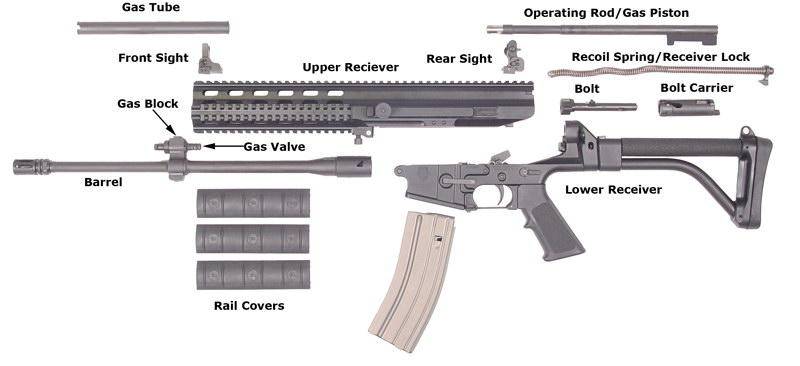These Are The Tools You Need To Build An AR-10 Rifle
You can almost imagine Eugene Stoner designing the AR10 specifically so that it can be modified and customized, such is the ease with which it can be done. There are now so many parts on the market that it has actually become bewildering, and you can build a rifle for any purpose that you want. In fact, many users choose to create a series of rifles, each specially designed for a specific type of shooting style.
But while parts are easy to get hold of, you are going to need a range of tools to be able to carry out modifications on your AR rifle build. And if you are really committed to updating your AR, then you are going to need a well-stocked tool chest to be able to carry these out. Some of these are specialized, but many others are standard tools, obtainable from any good tool store.
However, as any dedicated gun customizer will tell you, it’s always best to have a dedicated set of tools specifically to carry out jobs on your AR, so even if you think have a set of appropriate Allen keys, buy another set and keep them with the rest of your customizing tools.
Tools to make your Ar-10.
On top of the specialist tools is obviously going to be your jig and drill stand for finishing off your 80% lower receiver. Fairly large and relatively expensive, you are going to need such tools to complete these essential parts of a custom weapon. Of course, you’re also going to have to buy a router to mount on the drill stand and work your lower receiver. Once again, probably best to buy it new and use it as a dedicated tool for customizing rather than a general drill which might get damaged with other use.
Next up, you’ll need an Armorer’s Wrench, which is a must-have tool for any AR10 customizer. This tool is designed to help you with the building of and the working on both upper and lower receivers for AR10 rifles. The wrench is usually a multi-use wrench that offers builders several practical tools for tightening different parts on your AR10. It can be used to install and remove barrel nuts, castle nuts, flash hiders, and muzzle brakes. An Armorers Wrench can also be used to install and remove free float quad rails. This is a good, all-round tool that you definitely need.
Punch set. You are going to be spending a fair bit of time punching out pins as you customize, so don’t scrimp on these essential tools and spend out on some chrome-vanadium items that will last as long as you are modifying. Don’t forget, you are also going to need a mallet to drive your punches too.
You are also going to need a good set of Allen keys, Pliers, a good bench vice and accompanying vice blocks to prevent damage to whatever you are holding in the vice. It’s also worth investing in a good quality multi-tool as these have some interesting attachments that can get you out of all sorts of fixes as you work. Finally, don’t forget your pivot pin detent installation tool, which will help you start and extract roll pins, of which the AR has several.
So, now that you have a full set of tools, what parts can you modify and upgrade in your AR10?
There are plenty of aftermarket parts that either fit straight onto the AR10 or can be further machined to do so. The 80 percent lower receiver has to be the main one in the minds of many, and you might want to start there. The 80% lower is available as a semi-finished part which the custom-enthusiast can then complete to their own specification.
However, at this point, we should point out that the there can be some pitfall to building an AR10, since the .308 isn’t regarded as a standardized platform as the smaller AR15 is. Generally, if you take any two AR15’s there is a pretty high probability that the majority of the parts can be interchanged between them. This isn’t the case with the AR10 and there are two main patterns of the .308 rifle: the Armalite pattern and the DPMS (Defense Procurement Manufacturing Services or Panther Arms) pattern. When selecting an AR-308 lower receiver for building your AR10 .308 caliber, you must decide which type to choose for your custom home build.
Both patterns can make a good rifle, however the DPMS pattern can have interchangeable parts with the AR15. You need to understand which you intend building to ensure that you don’t mix up on the parts, and need to pay particular attention to the barrel and bolt-carrier group (BCG). There is a similar issue with the AR10 upper receiver, so you need to be very careful when coupling these parts.
Don’t forget, when you are purchasing an 80% lower receiver for building an AR10 .308, be careful to purchase a compatible 80% lower jig. You can get universal 80% lower jig patterns that are generally pretty compatible with all lower receiver styles, regardless of exterior dimensions, and would be a good idea to look into.
Conclusion
So, all of this means that you need a good understanding of the AR10 architecture, since without a basic understanding of how AR10’s work and the right parts for building an AR10 .308, you could as well end up with an expensive but non-functional gun.

